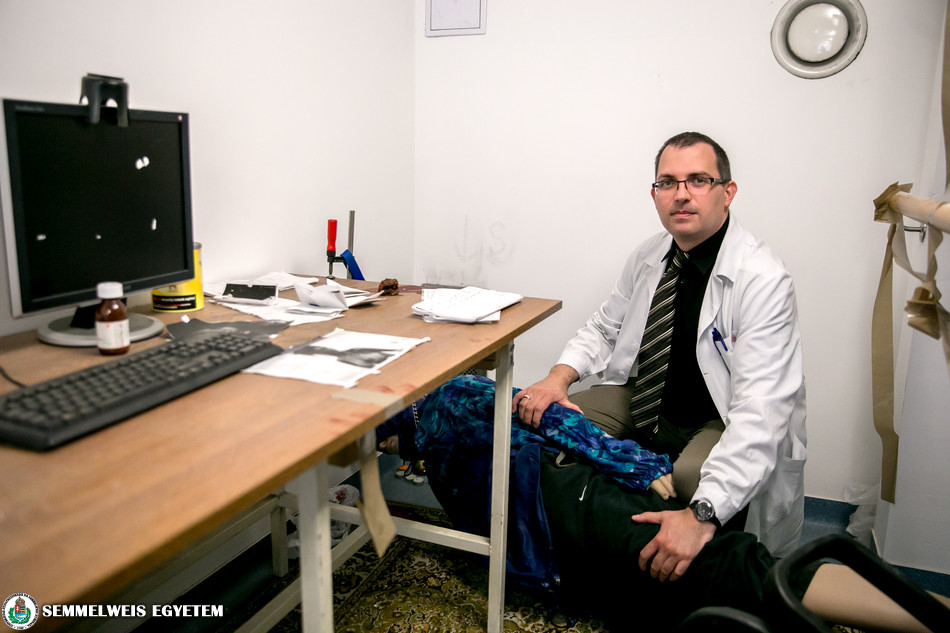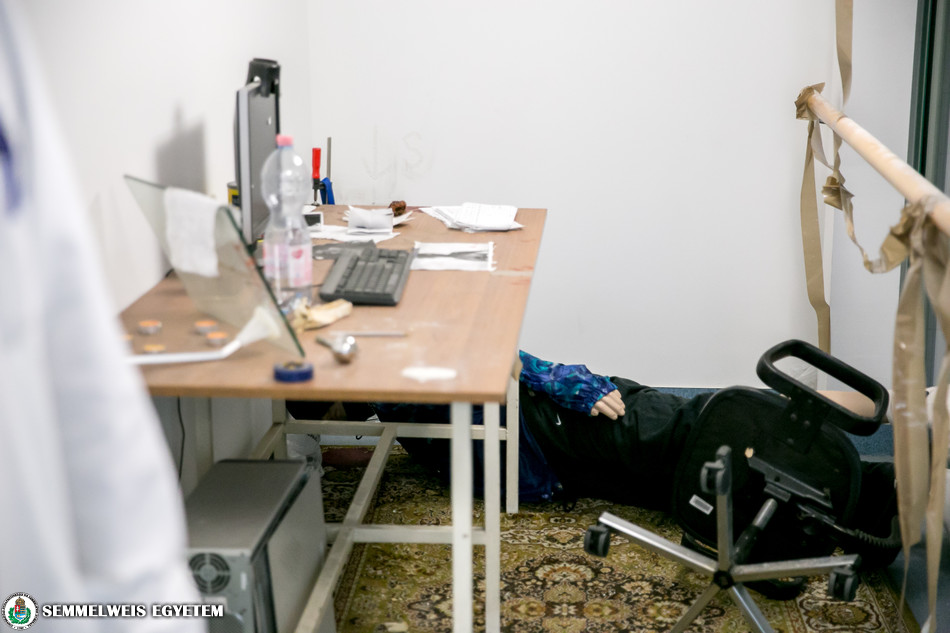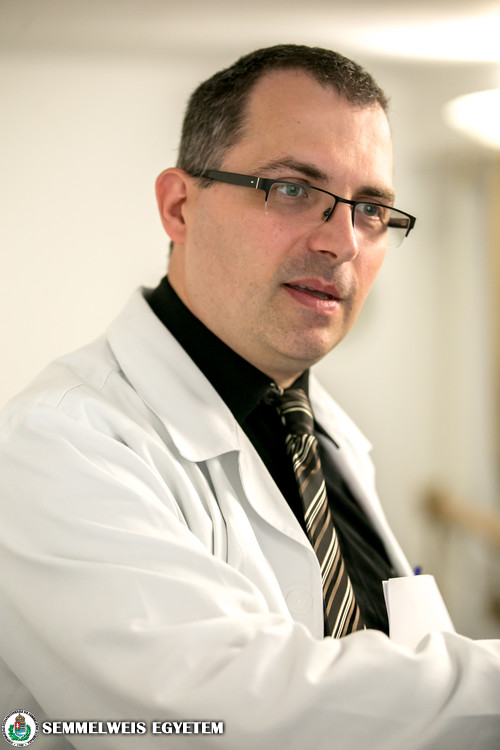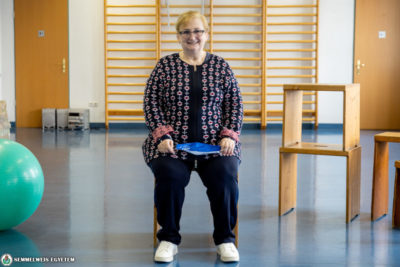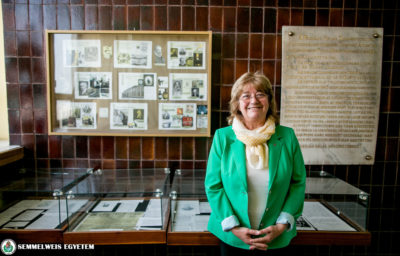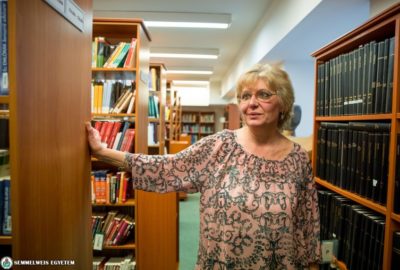The gallery of the autopsy room of the Department of Forensic Medicine is one of the favorite venues of Dr. Lóránt Magyar at the university. This is the place where, based on his idea, a few years ago a practical site was set up for students. The specialist, who also works as an academic advisor, refers to himself as an educational fundamentalist: for him, the most important is to emphasize the elements of knowledge in a radical and attention-grabbing form.
“Students should look for clues and work in groups on site, in a room furnished as an apartment in the 8th district, and present what they have learned about inquests in a situation composed of real elements. The practice is preceeded by theoretical education, but students are only provided with help during the inquest simulation practice if it is really necessary, they basically have to manage everything on their own. Later, the simulation exercise is followed by the examination of real corpses, which is considered to be a key competence within the subject of forensic medicine. The 60-minute field exercise is related to block-based education: it is practical, students have to pay attention to every detail during the solution”, explained Dr. Lóránt Magyar.
In addition to the COVID pandemic, as part of the hybrid education related to the new curriculum, autopsy exercises are still being held from week to week with a small number of students (maximum 5 people). He added that based on their previous experiences, the use of what was taught in theory does not work well for students in a real situation, but with this and other exercises (inquest; injury report; the recognition, description and evaluation of injuries; medical records analysis; practical training of Healthcare Electronic Services), they have the opportunity to be prepared for real situations.
Dr. Lóránt Magyar was admitted to Semmelweis University in 1998. He graduated in 2004 and has been working at the Department of Forensic Medicine ever since, where he has been involved in education since the beginning. He is also specialized in personal identification based on bone remains, but he also carries out tests with his own personal identification method, which is considered to be unique in the country, in which he compares camera shots to the person he is examining. As he said, there was a case when someone was identified based on a unique varicose vein pattern of a varicose foot based on a poor quality security camera footage.
Dr. Lóránt Magyar met his wife, with whom he has been married since 2009 and they have two children, at the university, via the Instructor Self-Active Group, at Markusovszky dormitory.
Eszter Keresztes
Photo: Attila Kovács – Semmelweis University (photos taken earlier)
Translation: Katalin Illés-Romhányi
